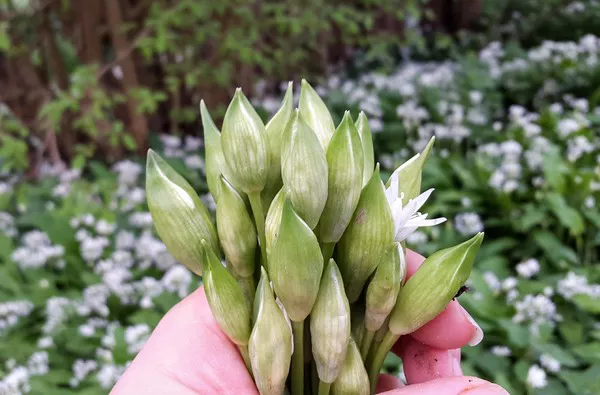In a remarkable discovery reminiscent of a botanical detective story, Molly Parren, an amphibian scientist with Vermont’s wildlife agency, stumbled upon a long-lost treasure while tracking a wood turtle. The incident occurred when she detected a surprisingly familiar scent emanating from a patch of floodplain soil. Upon closer inspection, Parren identified a rare wild garlic plant and quickly captured a photo.
Little did Parren realize that her snapshot would not only reveal the wild garlic but also unveil another elusive botanical wonder unseen in Vermont since 1916. Recognizing the plant in the foreground as floerkea, or False Mermaid-weed, Parren promptly shared the photograph with Grace Glynn, Vermont’s state botanist.
“When I saw the photo, I immediately recognized it as floerkea,” Glynn recounted in an interview with CNN. “I had been searching for this plant obsessively due to its ephemeral nature and minuscule white flowers, each no larger than a pinhead.”
Glynn, who had previously only seen floerkea in photographs, described her reaction upon confirming its presence as both elated and astonished. “I jumped up and screamed,” she admitted, emphasizing the plant’s fleeting appearance from April through June and its vulnerability to habitat alteration and invasive species.
The discovery of floerkea in Vermont underscores broader challenges facing native plants in the region. According to Glynn, floodplain habitats crucial for such species are increasingly threatened by invasive plants like garlic mustard and Japanese knotweed, which disrupt native ecosystems and endanger indigenous flora.
Moreover, climate change exacerbates these pressures by altering flood patterns, affecting the reproduction and resilience of river-shore plants. “Flooding during the summer months poses a significant threat,” Glynn cautioned, noting the potential impact on plant reproduction cycles and susceptibility to invasive species.
Tim Johnson, CEO of the Native Plant Trust, highlighted the evolutionary resilience of native species and underscored the importance of preserving their habitats. “Native plants play a critical role in maintaining ecological balance,” Johnson explained, stressing their symbiotic relationships with local pollinators and wildlife.
Reflecting on the broader implications of the floerkea discovery, Johnson expressed optimism about its potential to inspire conservation efforts in combating climate change. “Plants are foundational to our existence,” Johnson emphasized. “They provide food, oxygen, and essential resources, underpinning our entire ecosystem.”
Glynn echoed Johnson’s sentiment, emphasizing the collaborative efforts needed to safeguard native species. “Every species deserves a chance to thrive,” she asserted, highlighting the role of enthusiasts, volunteers, and botanists in documenting and protecting Vermont’s botanical heritage.
In conclusion, the rediscovery of floerkea not only resurrects a long-lost botanical specimen but also serves as a poignant reminder of the resilience of nature amidst mounting environmental challenges. As efforts to protect and restore native habitats continue, the tiny flower stands as a symbol of hope in an uncertain ecological landscape.


